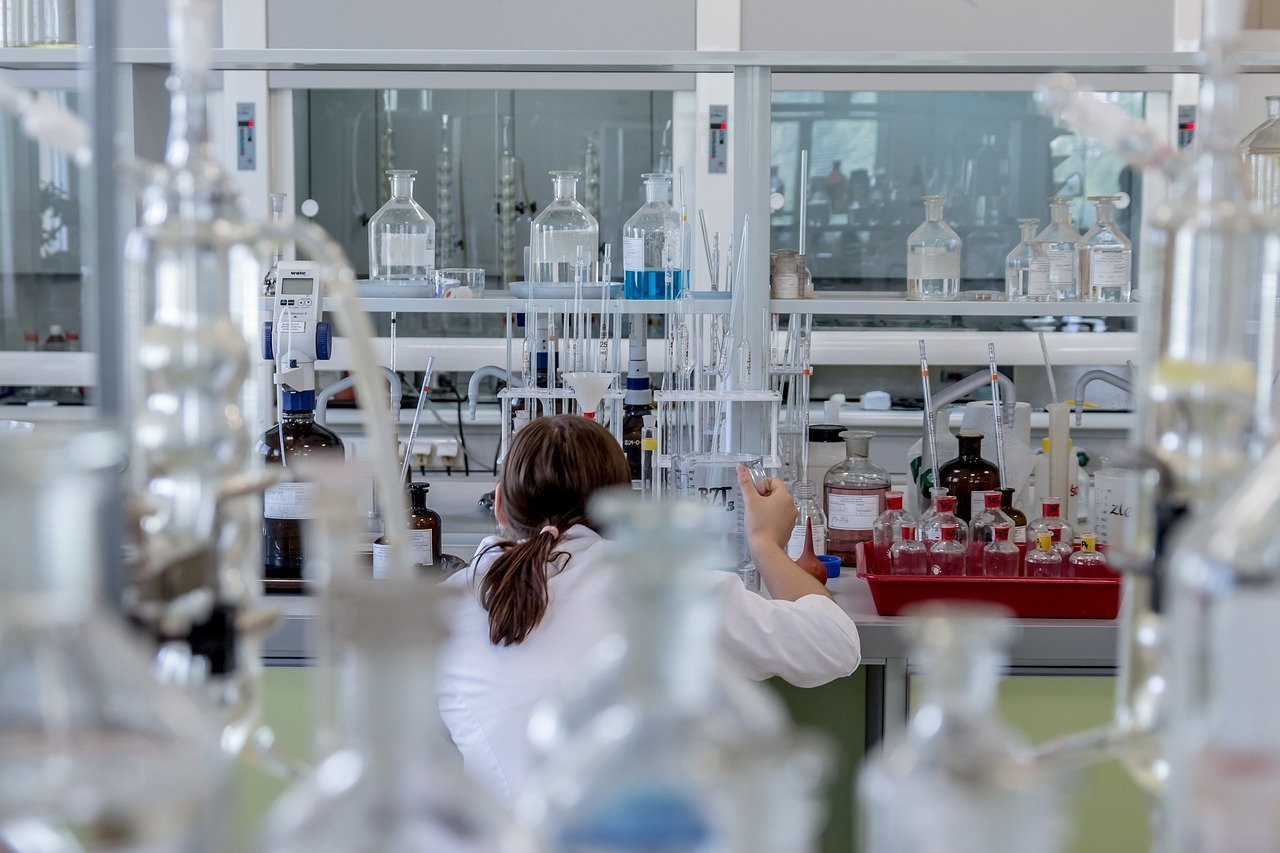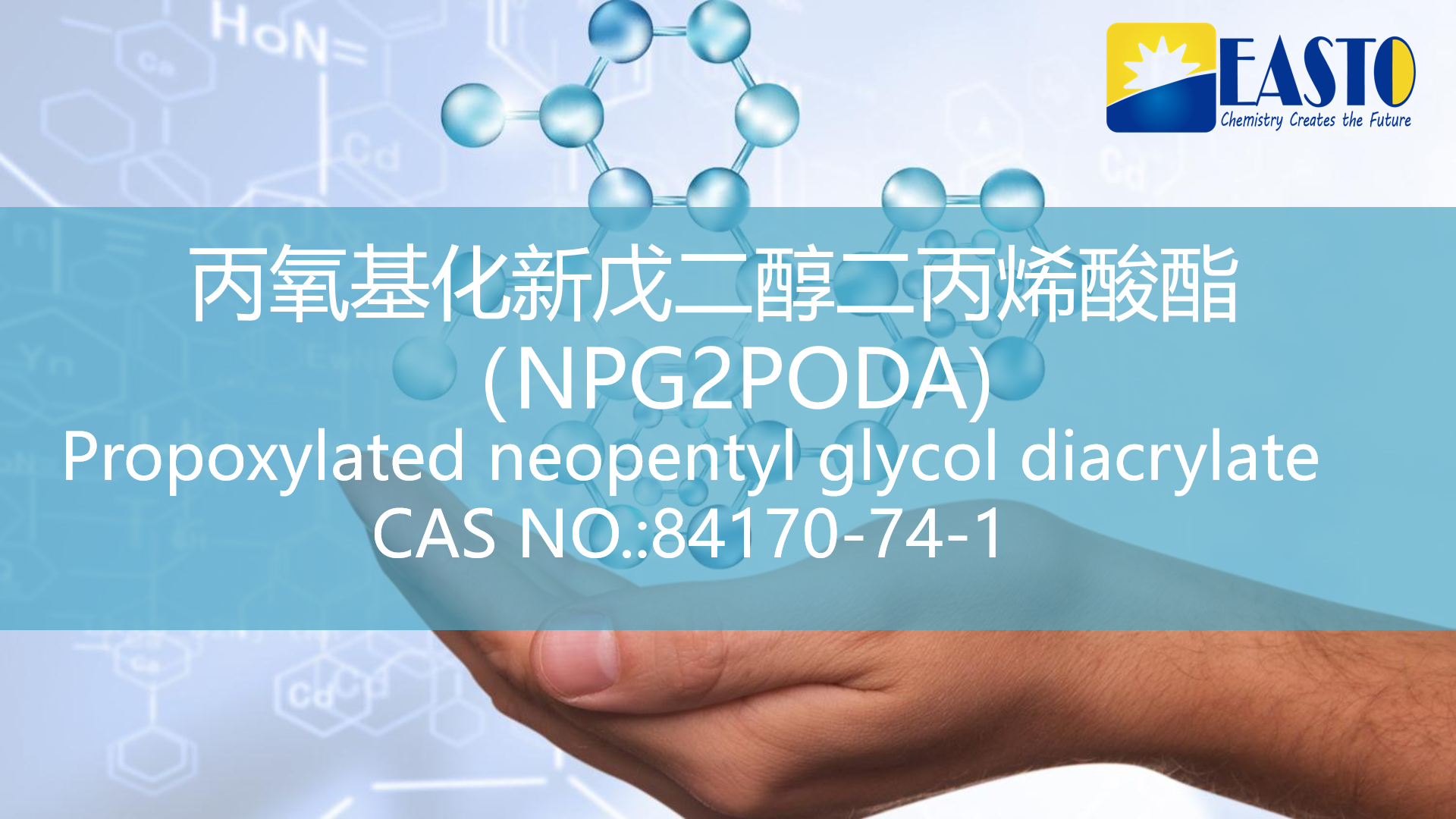The Science and Applications of Propoxylated Neopentyl Glycol Diacrylate (NPG2PODA)(Part 2)
Release time:
2025-05-22
Beyond the Molecule: Diverse Applications of NPG2PODA-Based Materials
NPG2PODA's versatility extends across numerous industrial sectors, driven by its unique property profile.
UV/EB Curing Formulations
NPG2PODA's primary utility lies in ultraviolet (UV) and electron beam (EB) curing systems. These advanced technologies operate on the principle of free radical polymerization of unsaturated monomers and oligomers. In UV curing, photoinitiators absorb UV light to generate free radicals, which then initiate the polymerization process. Conversely, in EB curing, high-energy electrons directly trigger polymerization, thereby obviating the need for photoinitiators.
UV/EB curing offers distinct advantages, including rapid curing times (ranging from seconds to minutes), high productivity, superior energy efficiency, and significantly reduced or zero VOC emissions compared to traditional thermal curing methods. NPG2PODA's intrinsic low viscosity and fast cure rate directly contribute to these operational benefits. The widespread industry shift towards UV/EB curing systems is predominantly driven by two critical factors: escalating environmental regulations concerning VOC emissions and the continuous demand for faster, more energy-efficient production processes. NPG2PODA, with its inherent low volatility and rapid curing capabilities, is not merely a component used in these systems; it actively enables them to meet these crucial industrial requirements. Its properties directly translate into tangible operational benefits such as accelerated throughput and reduced energy consumption, solidifying its role as a cornerstone for modern, sustainable manufacturing practices. NPG2PODA's low volatility and high reactivity are direct causal factors contributing to the "low VOC" and "fast cure" advantages intrinsic to UV/EB systems. This direct causal link, in turn, fuels its increasing adoption across industries that prioritize environmentally compliant and high-productivity manufacturing solutions.
Coatings and Adhesives
NPG2PODA is extensively employed in the formulation of high-performance coatings for a diverse range of substrates, including wood, PVC, various plastics, metals, and automotive components. Its integration into these formulations markedly improves key properties such as adhesion, flexibility, overall durability, scratch resistance, and chemical resistance.
In the realm of adhesives, NPG2PODA enhances overall bond strength, elasticity, and resistance to both thermal stress and chemical exposure. These characteristics are indispensable for demanding applications found in the construction, general manufacturing, and automotive industries. Furthermore, it is a vital constituent in printing inks, particularly UV-curable inks. Here, it ensures excellent adhesion to a variety of substrates, including plastics, metal foil, and coated paper, while also facilitating rapid drying to effectively prevent smudging during the printing process. The documented ability of NPG2PODA to significantly enhance adhesion and flexibility across such a broad spectrum of substrates (e.g., wood, plastics, metals, paper) suggests a sophisticated molecular interaction with diverse surface chemistries. This versatility likely stems from its balanced molecular structure, which includes both hydrophobic propoxy chains and polar acrylate groups, enabling strong interfacial bonding with disparate materials. This adaptability makes NPG2PODA a preferred monomer for formulators seeking a single, highly effective component to improve performance across multiple product lines and applications. Its multi-substrate compatibility simplifies formulation complexity for manufacturers who deal with products composed of various materials, thereby contributing to cost-effectiveness and streamlined production processes. Its inherent adaptability ensures its continued value in the development of universal coating and adhesive systems.
3D Printing Resins
NPG2PODA is gaining increasing prominence in the field of photocuring 3D printing, specifically within vat photopolymerization techniques such as Digital Light Processing (DLP). It is actively utilized in the precise formulation of activity-controlled photocuring 3D printing resins. Its characteristic low viscosity is absolutely critical for achieving the necessary fluidity required by bottom-up vat photopolymerization processes, which in turn enables the fabrication of high-resolution printed objects.
NPG2PODA plays a direct role in enhancing the mechanical properties of 3D printed parts, including flexural strength, hardness, and tensile strength, and is instrumental in achieving highly precise line patterns. It finds application in composite 3D printing, notably in ceramic slurries (e.g., for Si3N4 and alumina ceramics) for fabricating complex ceramic components with finely tailored properties. Furthermore, it is incorporated into formulations for polymer-based composites, including those reinforced with advanced materials like carbon fiber or graphene. The successful implementation of 3D printing, particularly for advanced materials such as ceramics and composites, necessitates extremely precise control over resin properties. NPG2PODA's low viscosity 20 directly addresses the critical fluidity requirements for high-resolution DLP printing. Its significant contribution to mechanical strength and its property of low shrinkage are crucial for producing functional, dimensionally stable parts. These attributes help overcome common challenges in additive manufacturing, such as warping, internal stresses, or inadequate mechanical integrity. This indicates that NPG2PODA is not merely a passive component but an active material that facilitates the expansion of 3D printing into more demanding and high-performance industrial applications, moving beyond simple prototyping. NPG2PODA is a key enabler for the maturation of 3D printing into a viable and robust manufacturing method for high-performance end-use parts, particularly relevant in sectors like aerospace, automotive, and medical devices, where the precise material properties and reliability of printed components are of paramount importance.
Other Specialized Applications
Beyond its major applications, NPG2PODA finds utility in several specialized areas:
- Sealants: It improves the flexibility and durability of UV-cured silicone sealants, which are widely used in construction and outdoor applications. This ensures the longevity and integrity of sealants under extreme weather conditions and temperatures.
- Electronic Potting and Encapsulation: In the electronics industry, NPG2PODA is utilized in potting and encapsulation compounds. It offers excellent protection against moisture, chemicals, and mechanical stress, which are primary threats to electronic components. The cured material also provides superior dielectric strength and maintains its properties across a broad range of temperatures. It is specifically used in UV-curable solder masks and conformal coatings for printed circuit boards (PCBs).
- Dental Materials: NPG2PODA is employed in the production of UV-curable dental materials, including restorative composites and various bonding agents.13
The application of NPG2PODA in electronic potting/encapsulation and dental materials 11 underscores a critical industrial need for materials that offer precise protection, high durability, and often biocompatibility within compact or highly sensitive environments. NPG2PODA's capacity to provide robust protection against moisture, chemicals, and mechanical stress, coupled with its low shrinkage and favorable dielectric properties, makes it exceptionally well-suited for these applications where component reliability and long-term performance are absolutely paramount. This suggests that NPG2PODA plays a significant role in enabling the ongoing trends of miniaturization and enhanced reliability in both electronic and medical devices. NPG2PODA contributes directly to the advancement of high-tech industries by providing robust, precision-curable materials for critical components, supporting broader technological trends in areas such as smart devices, implantable medical technologies, and advanced medical diagnostics.
Conclusion
Propoxylated Neopentyl Glycol Diacrylate (NPG2PODA) stands out as a remarkably versatile di-functional acrylate monomer. Its unique structural design, which skillfully integrates a neopentyl glycol backbone with propoxylation, bestows upon it a powerful and desirable combination of properties: exceptionally low viscosity, rapid curing capabilities, enhanced flexibility, superior adhesion, and minimal shrinkage during polymerization. These attributes collectively render it an indispensable component in contemporary UV/EB curing technologies.
Its continued and expanding adoption is anticipated in high-growth sectors such as advanced coatings, high-performance adhesives, and most notably, within the rapidly evolving landscape of 3D printing. In additive manufacturing, NPG2PODA's properties enable the precise fabrication of complex, high-performance parts, including advanced ceramics and composites. The market for UV-curable resins, encompassing monomers like NPG2PODA, is projected for substantial growth, a trend driven by both increasing environmental regulations and continuous technological advancements.8 This consistent market data unequivocally points to significant growth in the UV-curable coatings and resins sectors. This growth is explicitly linked to the overarching "going green" trends and the increasing integration of these materials into advanced applications like automotive manufacturing and 3D printing. This indicates that NPG2PODA's future market trajectory is not solely dependent on its inherent chemical properties, but critically on its strong alignment with macro-level industrial shifts towards sustainability and advanced, automated production methods. Its inherent versatility across multiple high-growth application areas (coatings, adhesives, 3D printing) strongly suggests a robust and continuously expanding market presence. NPG2PODA is strategically positioned as a foundational chemical component for industries that are actively transitioning towards more efficient, environmentally responsible, and technologically advanced manufacturing paradigms. Its adaptability and multifaceted utility ensure its sustained relevance and continued integration into future material innovations.
Previous Page
Latest News
Get a Free Consultancy
NANTONG EASTO MATERIALS TECHNOLOGY CO.,LTD.

No.118,Zhujiang Rd.,Juegang St.,Rudong County,
Nantong City,Jiangsu Province,226400,China




 2025-05-27
2025-05-27






